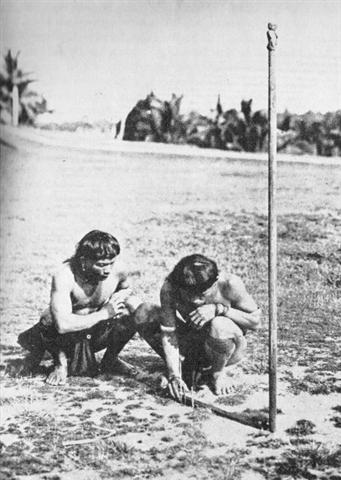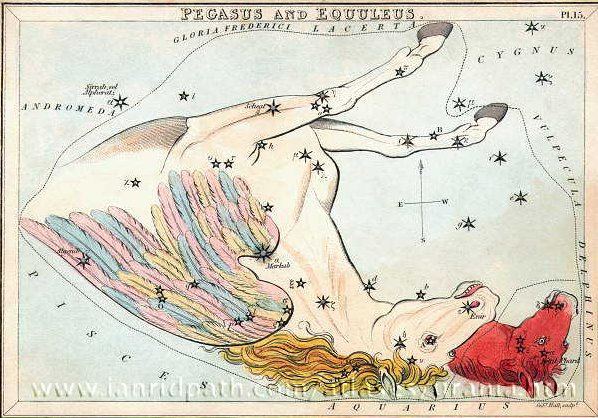We have to continue with aligning heliacal stars to the glyphs in line Ca13, we have not more than begun:
The beginning of the line was evidently designed to display the change from February to March, with all the problems emerging from the difference between 365 and 365Ľ. It is possible to imagine the 3 'bird toes' stretching up at left in Ca13-1 as representing the 3 ordinary years showing an empty hand in front and then to see Ca13-2 as the added day in the 4th odd year with 366 days. At bottom left in Ca13-2 there is a '4th dead toe' leading downwards to the southwest, toga, and in front (northeast) the upraised empty hand is greater (due to the 4-year cycle being longer than the ordinary 1-year cycle).
Metoro used the word haga at both glyphs.
I guess haga here can be translated as 'trap', a place from where movement no longer can continue. At the solstice the Polynesians on New Zealand compared Sun with a bird caught in a snare (at Orion) and at the other end of the year there could therefore be a fish-trap (Mgv. haga). At Ca13-1 Meroro said kua haga te tagata, but at the end of February in the leap year he said only kua haga without adding te tagata. In my mind this could affirm my interpretation of tagata (the glyph glyph) as an indicator for the completed counting of a well ordered sequence of 'limbs' in a cycle of time. When all parts of the 'man' has been enumerated, when all his members have been extended like the fingers from a fist, then the counting has to begin anew (after first having once again closed the fist). The star Matar (η Pegasi) clearly could mean 'to kill' or something like that. My opinion is based on some research decades ago into the possible correlations between such words as on one hand *matar (e.g. in 'matador' from the Spanish word for Bull-killer and in 'mate', the immobilized state of the king in chess) and on the other hand *mater (e.g. in 'madeira' as a name for the wine from the island with the same name, which in Portuguese means the island of 'wood and timbers'). ... But Osiris's evil brother, Set, whose sister-wife was the goddess Nephtys, was mortally jealous both of his virtue and of his fame, and so, stealthily taking the measure of his good brother's body, he caused a beautifully decorated sarcophagus to be fashioned and on a certain occasion in the palace, when all were drinking and making merry, had it brought into the room and jestingly promised to give it to the one whom it should fit exactly. All tried, but, like the glass slipper of Cinderella, it fitted but one; and when Osiris, the last, laid himself within it, immediately a company of seventy-two conspirators with whom Set had contrived his plot dashed forward, nailed the lid upon the sarcophagus, soldered it with molten lead, and flung it into the Nile, down which it floated to the sea ... To this we can then add *māter (e.g. in 'matter', the origin of materia, and in 'Alma Mater', Latin for the 'Nourishing Mother'). The 'sticks' (one black and the other multicoloured) which when 'spit at one another in a special way' stuck and 'rumpled and grew to become the mainland and Haida Gwaii', were pieces of wood, fruits of Mother Earth and thus capable of growth. The black stick represents her night side and the multicoloured stick her daytime side (with Sun present). In the rongorongo idiom the henua type of glyph is drawn like a vertical wooden stick and probably it means a 'timber' (a 'limb') in time, a well-ordered season (nawaa). When measuring the advance of Sun (or of some other star) the simplest instrument was a vertical stick planted firmly in Mother Earth. ... I became curious about this star ... called Nuutuittuq [= 'never moves'] ... So, on the lee side of our uquutaq (a snow windbreak) I positioned a harpoon pointing directly at this particular star to see if it would move. In the morning I checked it and discovered that the Tukturjuit (Ursa Major) had changed their position completely but the harpoon still pointed at this star ... I had discovered the stationary star ...
"η, Double, 3.2, on the left forearm [sic!], is the Matar of Whitall's Planisphere, from Al Sa'd al Matar, the Fourtunate Rain; as such, however, ο was included with it." (Allen)
... In South America the rainbow has a double meaning. On the one hand, as elsewhere, it announces the end of rain; on the other hand, it is considered to be responsible for diseases and various natural disasters. In its first capacity the rainbow effects a disjunction between the sky and the earth which previously were joined through the medium of rain. In the second capacity it replaces the normal beneficient conjunction by an abnormal, maleficient one - the one it brings about itself between sky and earth by taking the place of water ... If the name Matar for the star (η Pegasi, together with οmikron at the left knee) has a lucky (sa'd) meaning, then this should be because sky and earth here are joined in 'close embrace' through the medium of 'rain'. The necessary 'death' which I perceive to be implicit in the word 'matar' could then be the 'swallowing of the eye' - the return from the abnormal state of distance between sky and earth, created by the forces of light (life) coming in between. Sun dries up the Earth until nothing can grow any more. Thus he has to be 'killed'. And then, as the cycle of the year rolls on the rainy and fruitful embrace between sky and earth will result in their children being born in the tight space between them: ... Sky (rangi) and Earth (papa) lay in primal embrace, and in the cramped, dark space between them procreated and gave birth to the gods such as Tane, Rongo and Tu. Just as children fought sleep in the stifling darkness of a hare paenga, the gods grew restless between their parents and longed for light and air. The herculean achievement of forcing Sky to separate from Earth was variously performed by Tane in New Zealand and the Society Islands, by Tonofiti in the Marquesas and by Ru (Tu) in Cook Islands. After the sky was raised high above the earth, props or poles were erected between them and light entered, dispelling the darkness and bringing renewed life ... |




